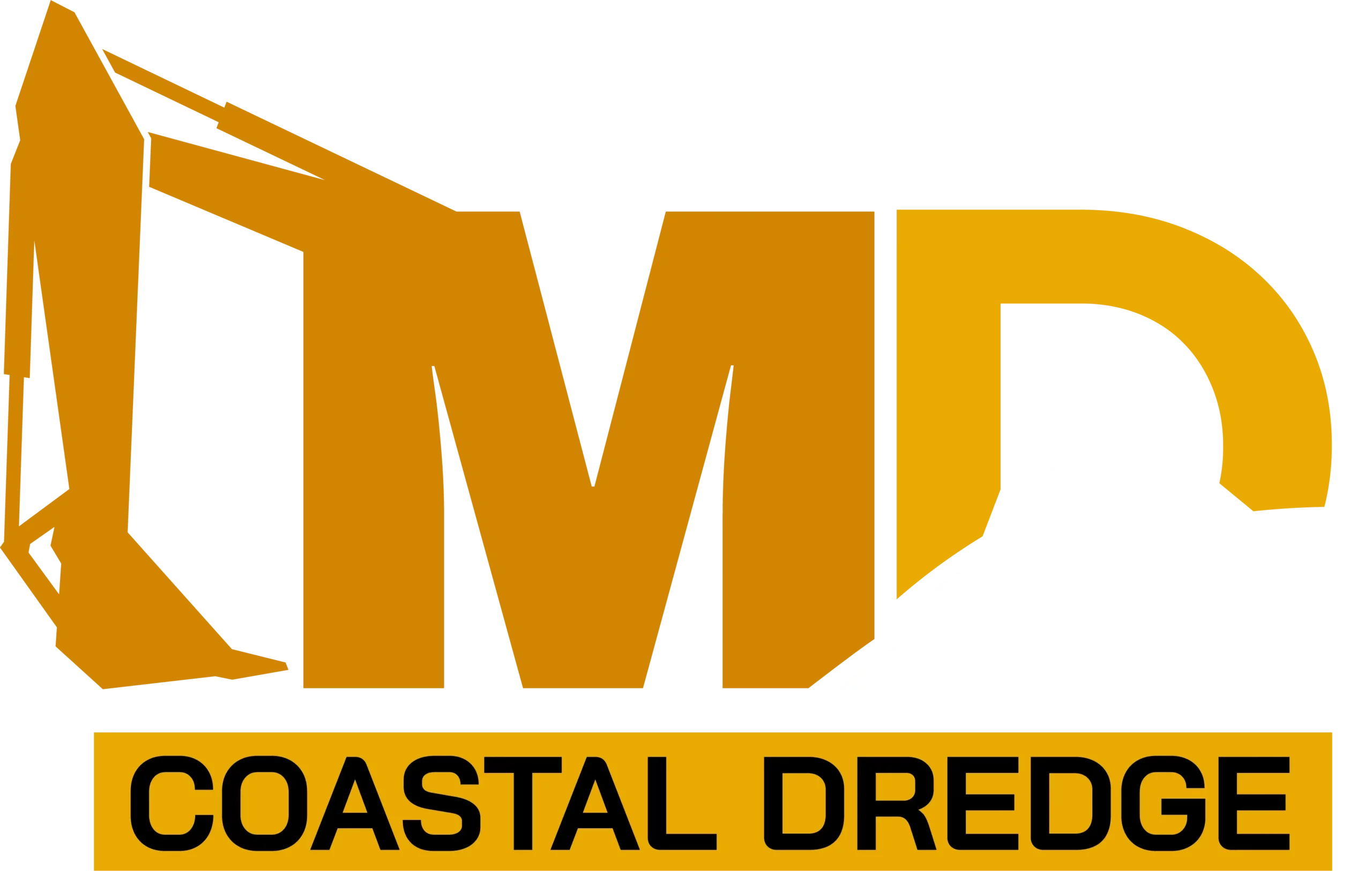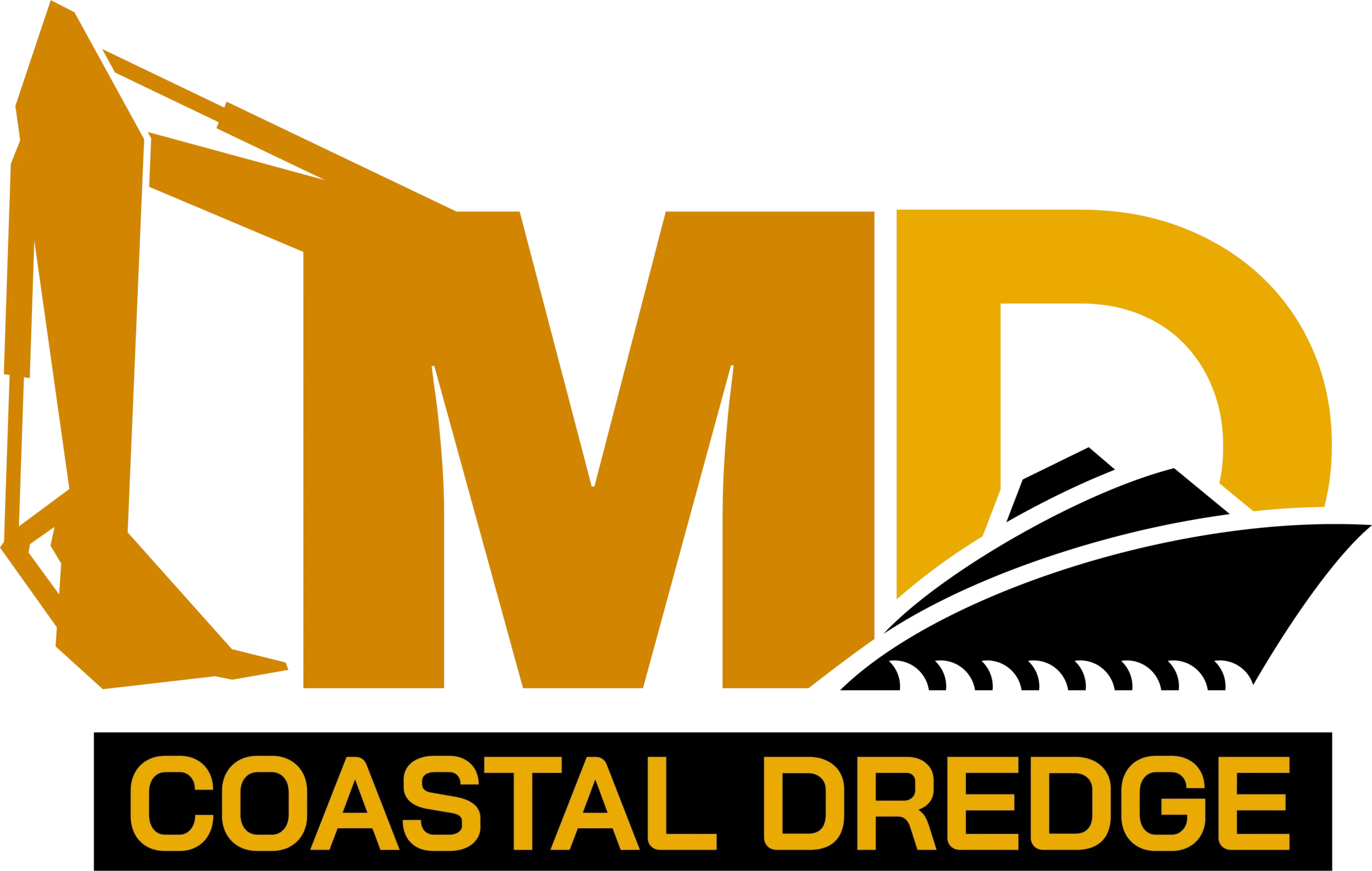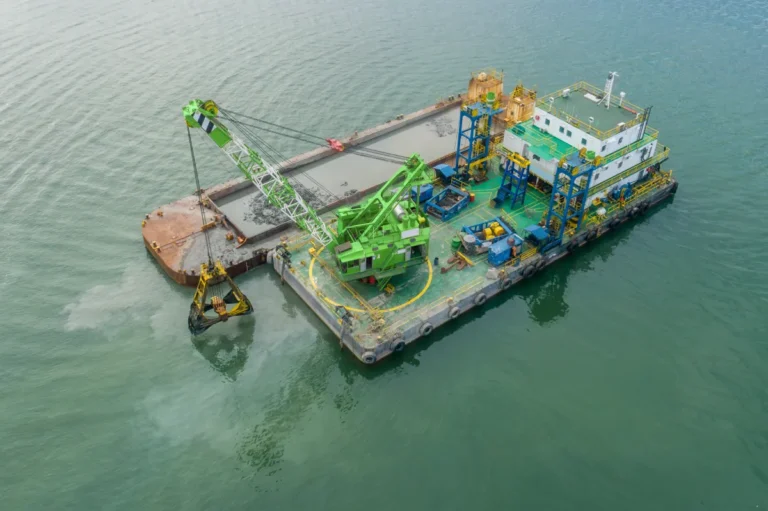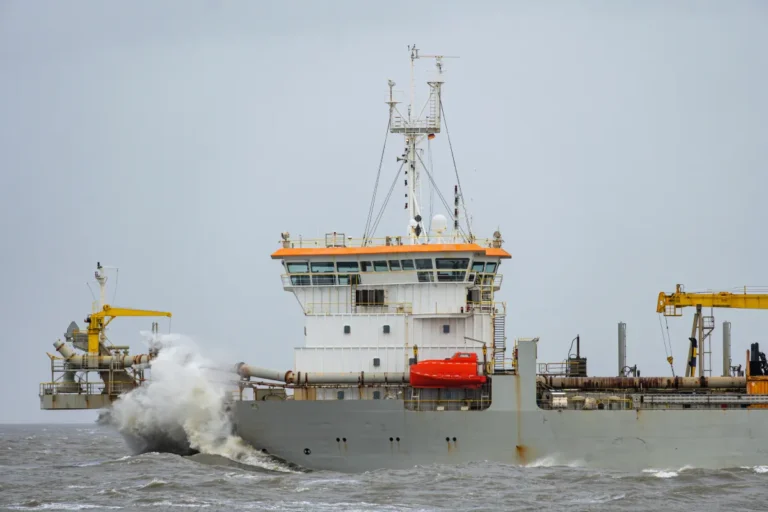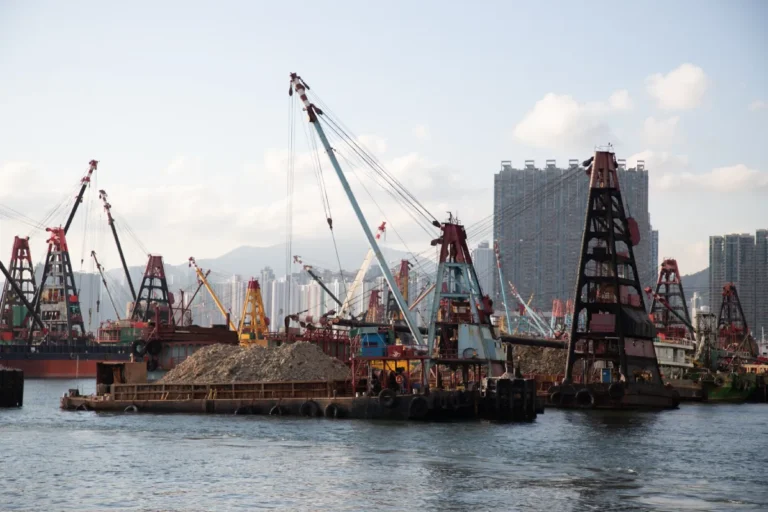Dredging plays a crucial role in modern infrastructure development, supporting industries such as shipping, construction, and environmental restoration. Dredging companies are responsible for removing sediment and debris from waterways, ensuring navigational safety, expanding ports, reclaiming land, and mitigating erosion. Whether for commercial ports, river maintenance, or coastal protection, dredging is essential for sustaining economic growth and infrastructure resilience.
However, as dredging projects expand, so do concerns about their environmental impact. The challenge is to balance development with conservation, ensuring that necessary excavation and sediment removal do not harm marine ecosystems, water quality, or biodiversity. Sustainable dredging practices are becoming a top priority, with industry stakeholders adopting eco-friendly technologies and regulatory compliance measures to minimize their environmental footprint.
The success of these efforts largely depends on collaboration among dredging companies, dredging contractors, and dredging consultants. Dredging contractors are responsible for executing projects using specialized equipment and techniques that reduce ecological disruption. Meanwhile, dredging consultants provide critical expertise in environmental assessments, regulatory compliance, and sustainable dredging methodologies. Together, these professionals drive innovation and accountability, ensuring that dredging supports economic progress without compromising natural ecosystems.
By adopting sustainable dredging practices, the industry can continue to meet the demands of port expansion, coastal development, and environmental restoration while mitigating adverse ecological effects. The following sections will explore the impact of dredging, regulatory considerations, and best practices that allow dredging companies to operate responsibly while supporting global infrastructure needs.
The Role of Dredging in Development
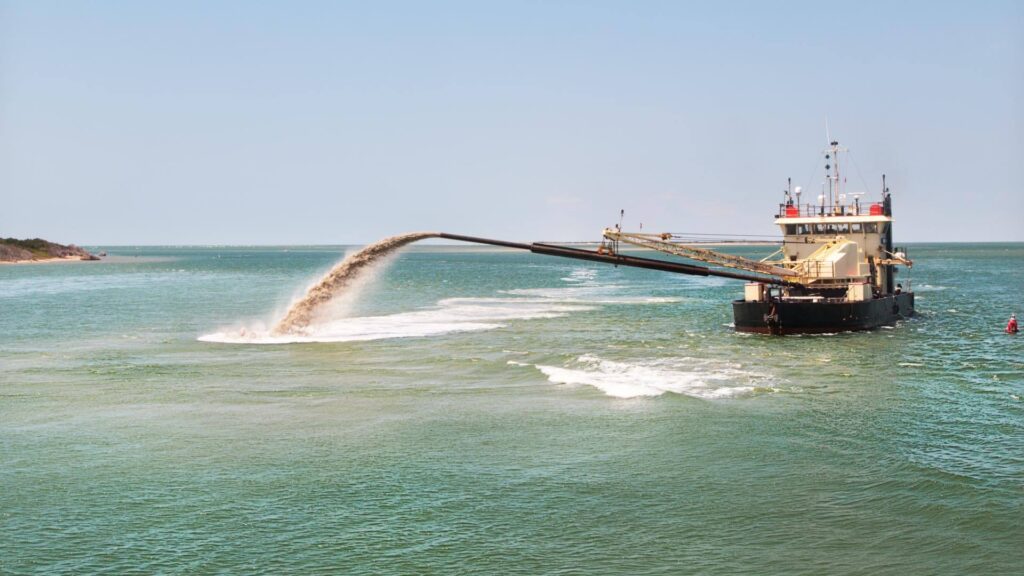
Dredging is a critical process for maintaining and expanding waterways, ports, and coastal infrastructure, supporting global trade, economic development, and environmental restoration. Dredging companies play a pivotal role in ensuring that navigation channels remain open, coastlines are protected, and land is reclaimed for various industrial and commercial uses. Without dredging, sediment accumulation would obstruct shipping routes, increase the risk of flooding, and limit access to vital resources.
Key Industries That Rely on Dredging
Maritime Transportation
The shipping industry depends heavily on dredging to keep harbors, ports, and shipping lanes operational. Sediment buildup in waterways can restrict vessel movement, leading to delays and economic losses. Dredging companies remove accumulated silt, sand, and debris to maintain deepwater access for cargo ships, fishing vessels, and cruise liners. Regular dredging ensures efficient trade operations and supports global supply chains.
Coastal Protection
Coastal erosion is a growing concern due to rising sea levels and extreme weather events. Dredging contractors help restore shorelines, replenish beaches, and construct protective barriers to safeguard coastal communities. By redistributing sand and sediment, dredging helps mitigate erosion, reduce flood risks, and enhance resilience against storms and tidal surges.
Land Reclamation
Another essential function of dredging is expanding habitable and industrial land. Many countries, particularly those with limited land space, use dredging to reclaim land from the sea. Dredging companies extract and relocate sediment to create new land for urban development, airports, and industrial zones. This process has been crucial in cities like Dubai, Singapore, and Hong Kong, where artificial islands and waterfront developments have reshaped urban landscapes.
Mining and Resource Extraction
Dredging is widely used in the mining industry for extracting valuable resources such as sand, gravel, and minerals from riverbeds, lakes, and seabeds. Dredging contractors deploy specialized equipment to recover materials efficiently while minimizing environmental disruption. Additionally, dredging is essential in maintaining tailing ponds in mining operations, preventing contamination, and ensuring compliance with environmental regulations.

How Dredging Contractors Contribute to Economic Growth
Dredging contractors play a vital role in executing large-scale dredging projects that drive economic growth. By maintaining navigable waterways and expanding port capacity, they enable increased trade and commerce, supporting industries reliant on maritime logistics. Coastal restoration projects led by dredging professionals also help protect real estate and tourism investments by reinforcing shorelines and mitigating erosion.
Additionally, dredging consultants contribute to the industry’s sustainability by advising on best practices, regulatory compliance, and innovative dredging techniques. Their expertise ensures that dredging projects align with environmental standards while maximizing economic benefits. By integrating advanced technologies and sustainable methodologies, dredging companies can continue to support infrastructure development while minimizing their ecological footprint.
Environmental Impacts of Dredging
While dredging is essential for infrastructure development and economic growth, it can also pose significant environmental challenges. Dredging companies must navigate the delicate balance between maintaining waterways and minimizing ecological disruption. Without proper management, dredging activities can negatively impact marine ecosystems, water quality, and biodiversity. Understanding these challenges is crucial for dredging contractors and dredging consultants to implement sustainable dredging practices that comply with environmental regulations.
Potential Negative Effects on Ecosystems
Sediment Displacement and Water Turbidity
One of the most immediate impacts of dredging is the disturbance of sediments, which can increase water turbidity. This clouding of the water reduces sunlight penetration, disrupting photosynthesis in aquatic plants and affecting marine food chains. High turbidity levels can also smother coral reefs and other delicate marine habitats, leading to long-term ecological consequences. Dredging companies must use precision dredging techniques and sediment containment strategies to mitigate these effects.
Habitat Destruction for Marine Life

Dredging can directly impact marine biodiversity by disturbing or destroying critical habitats. Many fish species, crustaceans, and other aquatic organisms rely on seabed environments for breeding, feeding, and shelter. The removal of sediment and alteration of underwater landscapes can lead to habitat loss, forcing species to migrate or face population declines. Dredging contractors must carefully plan projects to avoid sensitive ecological areas and incorporate habitat restoration measures where possible.
Disruption of Natural Sediment Flow
Dredging alters the natural movement of sediments, which can have unintended consequences on coastal and riverine ecosystems. In some cases, excessive dredging can lead to increased erosion downstream or sediment starvation in certain areas, affecting shorelines and wetland ecosystems. A thorough assessment by a dredging consultant can help predict and mitigate these sediment flow disruptions, ensuring that dredging projects do not create long-term ecological imbalances.
Contaminant Release from Dredged Materials
Sediments in heavily industrialized or urbanized areas often contain pollutants such as heavy metals, hydrocarbons, and chemicals. When disturbed during dredging, these contaminants can be released into the water column, posing risks to marine life and human health. Proper testing and disposal methods are critical to preventing environmental contamination. Dredging companies must adhere to strict environmental protocols to ensure that dredged material is handled safely and in compliance with local and international regulations.
Regulatory Concerns and Compliance Challenges for Dredging Companies
Environmental regulations governing dredging activities vary by region but generally require thorough impact assessments, permitting, and monitoring. Dredging contractors must comply with laws designed to protect water quality, marine habitats, and coastal ecosystems. However, navigating these regulatory frameworks can be complex, requiring the expertise of a dredging consultant to ensure adherence to environmental guidelines.
Compliance challenges often arise in projects involving contaminated sediments, protected marine areas, or large-scale coastal developments. Failure to meet regulatory requirements can result in project delays, legal penalties, and reputational damage for dredging companies. By implementing sustainable dredging technologies and proactive environmental management, the industry can reduce its ecological footprint while continuing to support infrastructure development.
Sustainable Dredging Practices
As environmental concerns grow, dredging companies are adopting more sustainable practices to minimize their ecological footprint while maintaining essential infrastructure. Advances in technology, innovative sediment management solutions, and responsible dredging strategies are helping dredging contractors reduce environmental disruptions. Additionally, with the guidance of a dredging consultant, companies can implement best practices that align with regulatory standards and ecological preservation efforts.
Advanced Technologies Minimizing Environmental Impact
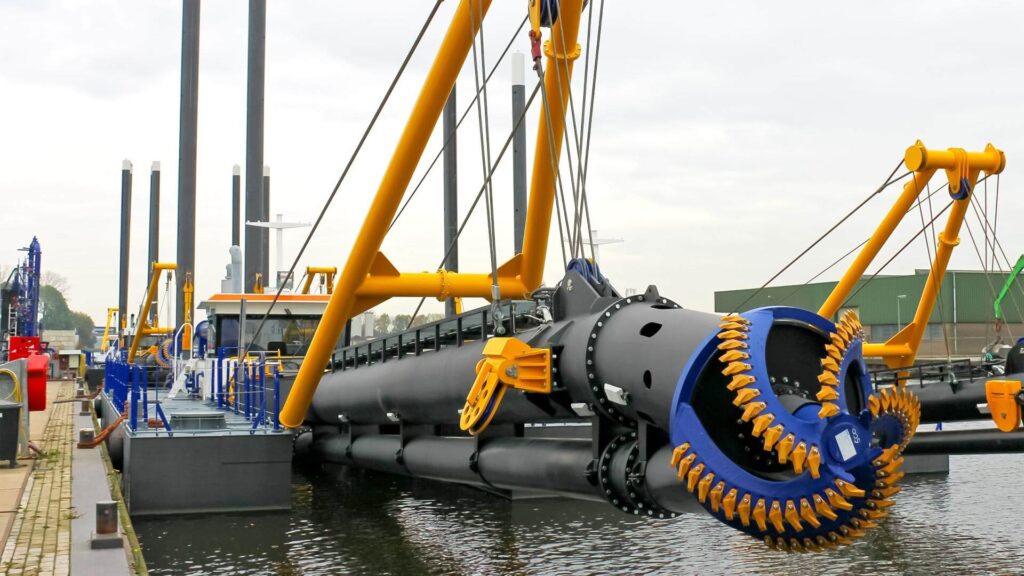
Precision Dredging Techniques
Traditional dredging methods often remove excess material, increasing turbidity and disrupting habitats. Precision dredging, on the other hand, utilizes advanced GPS and sonar technology to target specific areas with minimal impact. By reducing over-excavation, dredging companies can decrease sediment disturbance and protect marine ecosystems.
Eco-Friendly Dredging Equipment
Sustainable dredging prioritizes the use of energy-efficient and low-emission dredging equipment. Many contractors are adopting electric-powered dredgers and hybrid systems that lower fuel consumption and reduce greenhouse gas emissions. Additionally, cutter suction dredgers equipped with turbidity control mechanisms help limit sediment dispersion, protecting water quality and aquatic habitats.
Sediment Management Solutions
Innovative sediment containment and dewatering techniques help prevent the spread of contaminants and excess sediment. Silt curtains, for example, act as barriers to control turbidity, while geotextile tubes allow for safe sediment storage and reuse. By implementing strategic sediment management plans, dredging companies can enhance efficiency and reduce environmental risks.
Best Practices for Responsible Dredging
Environmental Impact Assessments (EIA)
An Environmental Impact Assessment (EIA) is crucial to identifying potential ecological risks before initiating any dredging project. Dredging consultants conduct these assessments to evaluate water quality, marine habitats, and sediment composition. The findings help dredging companies develop mitigation strategies that comply with environmental regulations and minimize negative impacts.
Adaptive Management Strategies
Sustainable dredging requires continuous monitoring and flexibility to adjust operations as needed. Adaptive management strategies involve real-time environmental monitoring systems that track water turbidity, sediment displacement, and marine life activity. Dredging contractors can modify their approach based on data insights, ensuring responsible dredging while minimizing disruption to ecosystems.
Beneficial Reuse of Dredged Materials
Many dredging companies are finding sustainable ways to repurpose dredged material rather than disposing of it as waste. Beneficial reuse applications include beach nourishment, wetland restoration, and land reclamation. Reinforcing shorelines and restoring degraded habitats with dredged sediments reduces environmental impact and supports coastal resilience against erosion and climate change.
By integrating these sustainable dredging practices, dredging companies can enhance efficiency, comply with environmental regulations, and contribute to the long-term health of marine and coastal ecosystems. With the expertise of dredging consultants, the industry can continue advancing toward greener, more responsible dredging solutions.
The Role of Dredging Consultants in Environmental Compliance
Environmental compliance is a critical aspect of modern dredging operations, requiring dredging companies to adhere to strict regulations designed to protect water quality, marine habitats, and coastal ecosystems. With increasing environmental scrutiny and regulatory complexities, many companies rely on the expertise of a dredging consultant to ensure their projects meet compliance standards while minimizing ecological impact.
How Dredging Consultants Help Companies Navigate Environmental Regulations
Dredging projects are subject to a wide range of local, national, and international environmental regulations. Navigating these complex requirements can be challenging, especially for large-scale operations involving sensitive ecosystems or contaminated sediments. A dredging consultant plays a crucial role in guiding dredging companies through the regulatory landscape by:
- Conducting Environmental Impact Assessments (EIAs): Before dredging begins, an EIA evaluates a project’s potential environmental consequences. Dredging consultants analyze sediment quality, marine biodiversity, water conditions, and ecosystem sensitivities to determine the least disruptive dredging approach.
- Securing Permits and Regulatory Approvals: Obtaining the necessary permits can be time-consuming. Dredging consultants work with regulatory agencies to ensure that all documentation is in order and that dredging companies comply with guidelines related to sediment disposal, water turbidity control, and habitat protection.
- Monitoring Compliance Throughout the Project: Environmental regulations often require continuous monitoring and reporting. Dredging consultants oversee real-time data collection on turbidity, sediment movement, and water quality to ensure that dredging contractors remain compliant throughout the project.
- Developing Site-Specific Environmental Management Plans: Each dredging site has unique environmental challenges. A dredging consultant assesses site conditions and formulates customized plans to mitigate risks, ensuring sustainable and legally compliant operations.
Developing Sustainable Dredging Plans and Mitigation Strategies
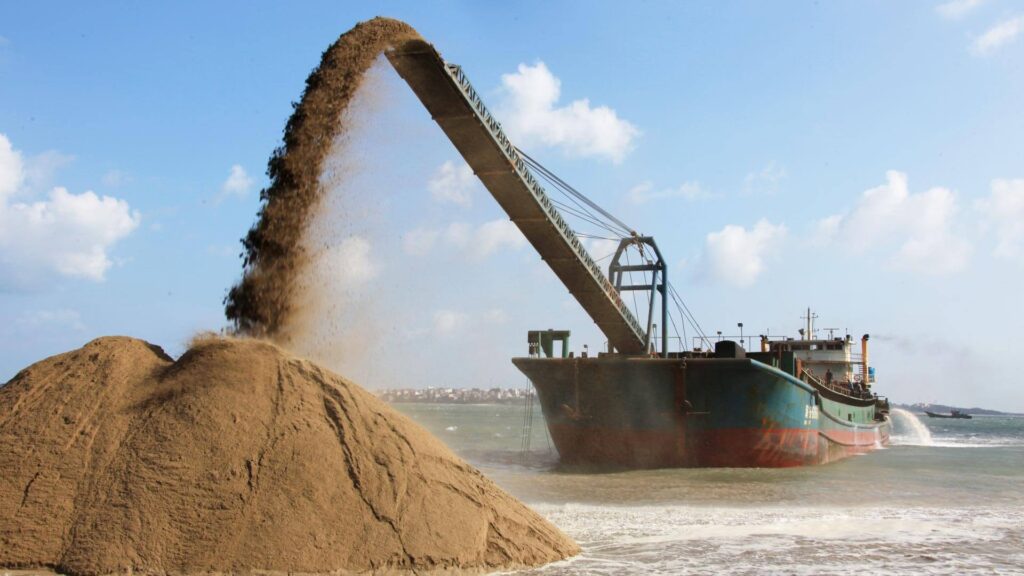
Sustainability is at the forefront of modern dredging practices, and dredging consultants play a key role in helping dredging companies adopt environmentally responsible approaches. Sustainable dredging plans focus on minimizing disruption while maximizing efficiency. Some of the key strategies include:
- Implementing Sediment Management Solutions: Instead of treating dredged material as waste, dredging consultants help identify beneficial reuse options, such as beach nourishment, wetland restoration, or land reclamation. Proper sediment management reduces disposal costs and enhances ecological benefits.
- Utilizing Eco-Friendly Dredging Technologies: Sustainable dredging techniques, such as precision dredging and low-impact dredging equipment, help reduce water turbidity and habitat disruption. A dredging consultant advises on the best equipment and methodologies to minimize ecological harm.
- Developing Adaptive Management Strategies: Real-time environmental monitoring allows dredging contractors to adjust operations as needed. If turbidity levels exceed regulatory thresholds, for example, adaptive strategies such as modifying dredging schedules or using silt curtains can mitigate the impact.
- Restoring Affected Habitats: When dredging activities alter marine habitats, dredging consultants design habitat restoration programs to rehabilitate seagrass beds, coral reefs, and other sensitive environments.
By integrating compliance-driven strategies with sustainable dredging methods, dredging consultants help dredging companies maintain their commitment to responsible environmental stewardship while ensuring regulatory approval and project success. Their expertise is invaluable in balancing economic development with ecological conservation, making them an essential part of any dredging operation.
Regulatory Framework and Industry Standards
Dredging activities are governed by a complex network of international, national, and regional regulations designed to protect marine environments, ensure navigational safety, and promote sustainable development. Dredging companies must comply with these regulations to minimize environmental impact while maintaining operational efficiency. Adherence to legal and environmental standards is crucial not only for project approval but also for mitigating risks such as fines, legal disputes, and reputational damage.
Overview of Global and Regional Regulations Governing Dredging Activities
Dredging operations, whether for port maintenance, land reclamation, or environmental restoration, must adhere to strict regulatory frameworks. Some of the key international and regional regulatory bodies overseeing dredging activities include:
- International Maritime Organization (IMO): The IMO sets global standards for maritime activities, including dredging, under conventions such as the London Convention and Protocol, which regulates the disposal of dredged materials at sea.
- U.S. Environmental Protection Agency (EPA): The EPA enforces the Clean Water Act (CWA) and the Marine Protection, Research, and Sanctuaries Act (MPRSA) in the United States to ensure that dredging companies comply with water quality and sediment disposal guidelines.
- European Union Water Framework Directive (WFD): The EU has strict regulations for dredging activities that affect water bodies, ensuring compliance with environmental sustainability goals.
- Local and Regional Authorities: Many coastal nations have their environmental agencies and permitting processes that govern dredging activities. For example, Australia’s Great Barrier Reef Marine Park Authority (GBRMPA) enforces stringent controls to protect coral reefs from dredging-related impacts.
Understanding and adhering to these regulations is a key responsibility of dredging contractors, as non-compliance can lead to costly project delays or shutdowns.
Compliance Requirements for Dredging Companies and Dredging Contractors
Dredging companies must navigate a range of compliance requirements before, during, and after a dredging project. These typically include:
- Environmental Impact Assessments (EIA): Before a project begins, a thorough EIA must be conducted to assess potential environmental risks. This process often requires input from a dredging consultant who specializes in regulatory compliance and mitigation planning.
- Dredged Material Management: Dredging contractors must follow guidelines regarding how and where dredged sediments can be disposed of or repurposed. Some projects may require offshore disposal, while others promote beneficial reuse, such as wetland restoration or beach nourishment.
- Water Quality Monitoring: Continuous monitoring of water turbidity, contaminant levels, and sediment movement is required to ensure compliance with environmental permits.
- Marine Habitat Protection Measures: Dredging near coral reefs, seagrass beds, or protected marine areas requires special precautions. Dredging consultants help companies develop strategies to minimize disruption to these sensitive ecosystems.
- Post-Dredging Monitoring and Reporting: After the completion of a dredging project, ongoing environmental monitoring is often required to ensure that marine habitats recover and that dredging activities have not caused unintended harm.
Failure to comply with these regulatory requirements can result in hefty fines, suspension of operations, or long-term reputational damage for dredging companies and dredging contractors.
Importance of Collaboration Between Industry Stakeholders, Government Agencies, and Environmental Organizations
Sustainable and compliant dredging operations require a collaborative approach. Dredging companies must work closely with regulatory agencies, environmental organizations, and industry stakeholders to ensure responsible dredging practices. Key aspects of this collaboration include:
- Engaging with Regulatory Authorities: Open communication with government agencies helps facilitate permitting processes, address compliance concerns, and implement best practices in sustainable dredging.
- Partnering with Environmental Organizations: Non-profit groups and marine conservation organizations often play a key role in ensuring that dredging projects minimize harm to ecosystems. Collaborating with these groups can enhance corporate social responsibility efforts.
- Incorporating Industry Best Practices: International dredging organizations, such as the International Association of Dredging Companies (IADC), set best practice guidelines for the industry. By following these standards, dredging contractors can align with global sustainability goals.
- Leveraging the Expertise of Dredging Consultants: Working with a dredging consultant helps dredging companies develop effective environmental management plans, secure necessary permits, and implement advanced monitoring technologies.
By prioritizing regulatory compliance, sustainability, and collaboration, dredging companies can continue supporting global infrastructure development while protecting marine and coastal environments.
Innovations in Eco-Friendly Dredging
As the demand for dredging continues to grow, dredging companies are embracing innovative solutions to reduce environmental impact and enhance efficiency. Advances in sustainable dredging technologies, real-time monitoring systems, and eco-friendly methodologies are reshaping the industry. With increasing regulatory pressure and environmental awareness, dredging contractors and dredging consultants are adopting cutting-edge tools to minimize ecological disruption while maintaining critical infrastructure.
Emerging Trends in Sustainable Dredging Technologies
Technological advancements are driving a new era of environmentally responsible dredging. Some of the most impactful innovations include:
- Electric and Hybrid Dredgers: Traditional diesel-powered dredgers contribute to carbon emissions and air pollution. Many dredging companies are transitioning to electric and hybrid dredging equipment, which reduces fuel consumption and lowers greenhouse gas emissions.
- Precision Dredging Equipment: GPS and sonar-guided dredging systems enable precise excavation, reducing unnecessary sediment removal and minimizing turbidity. This technology ensures that only targeted areas are dredged, preventing excess environmental disturbance.
- Turbidity Control Systems: High turbidity can harm marine life by blocking sunlight and smothering ecosystems. Advanced silt curtains, biodegradable polymers, and enclosed dredging systems help dredging contractors control sediment dispersion and protect surrounding environments.
- Eco-Friendly Cutter Heads and Pumps: Modern dredging equipment now incorporates low-impact cutter heads and energy-efficient pumps designed to reduce ecological damage while improving material recovery rates.
Use of Real-Time Monitoring Systems to Reduce Environmental Footprint
Monitoring dredging activities in real-time is a game-changer for reducing environmental impact. Dredging consultants are integrating advanced monitoring systems to ensure compliance with sustainability guidelines. These include:
- Remote Water Quality Sensors: Real-time turbidity and water quality sensors allow dredging companies to track sediment levels and adjust operations as needed to stay within environmental regulations.
- Automated Dredge Monitoring Software: AI-driven software analyzes dredging performance, optimizing sediment removal while minimizing environmental harm.
- Acoustic and Sonar Mapping Technology provides continuous seabed assessments, ensuring that dredging does not disrupt sensitive habitats or exceed necessary excavation depths.
- Marine Life Detection Systems: Some dredging contractors are using hydroacoustic sensors and AI-driven monitoring to detect and avoid marine species, preventing unnecessary harm to aquatic life.
Dredging companies can improve efficiency, enhance compliance, and reduce their projects’ environmental footprint by leveraging these real-time monitoring systems.
Future Advancements in Environmentally Responsible Dredging
The future of dredging is increasingly focused on sustainability. Some anticipated advancements include:
- Autonomous and AI-Driven Dredging: Artificial intelligence and automation will enhance precision, reduce human error, and improve dredging accuracy. AI-driven systems can analyze environmental conditions and adapt operations in real-time.
- Nature-Based Dredging Solutions: Instead of traditional sediment disposal, dredging contractors are exploring solutions that work with natural processes, such as using dredged materials for wetland restoration or creating artificial reefs.
- Biodegradable Dredging Fluids and Materials: Research is underway to develop biodegradable dredging additives that help manage sediment without introducing harmful chemicals into the environment.
- Carbon Capture in Dredging Operations: Future dredging technologies may integrate carbon sequestration techniques to offset emissions and contribute to climate change mitigation.
As environmental sustainability becomes a priority, dredging companies will continue to innovate, adopting greener technologies and data-driven solutions. With the expertise of dredging consultants, the industry is moving toward a future where dredging operations support both economic growth and environmental preservation.
Conclusion
Environmental responsibility is no longer an option but a necessity for dredging companies operating in today’s regulatory and ecological landscape. While dredging remains critical for maintaining ports, waterways, and coastal infrastructure, the industry must balance economic growth with environmental preservation. Sustainable dredging practices, advanced technologies, and strict regulatory compliance are essential to mitigating ecological impacts and ensuring long-term marine health.
For dredging contractors, prioritizing eco-friendly equipment, precision dredging techniques, and sediment management solutions can significantly reduce environmental disruption. Additionally, dredging consultants play a crucial role in guiding companies through complex regulations, implementing sustainable dredging strategies, and adopting real-time monitoring systems that enhance operational efficiency while protecting marine ecosystems.
The future of dredging depends on continued innovation and collaboration between industry stakeholders, government agencies, and environmental organizations. By embracing sustainability, dredging companies can contribute to both economic development and ecological conservation, proving that responsible dredging and environmental stewardship can go hand in hand.
